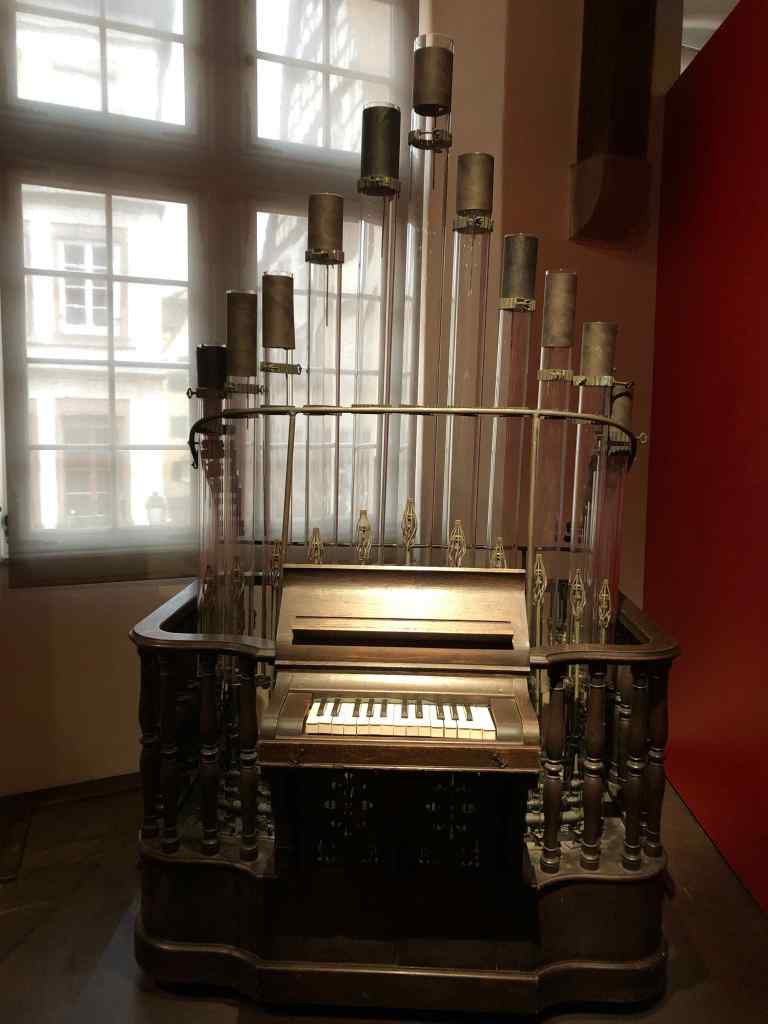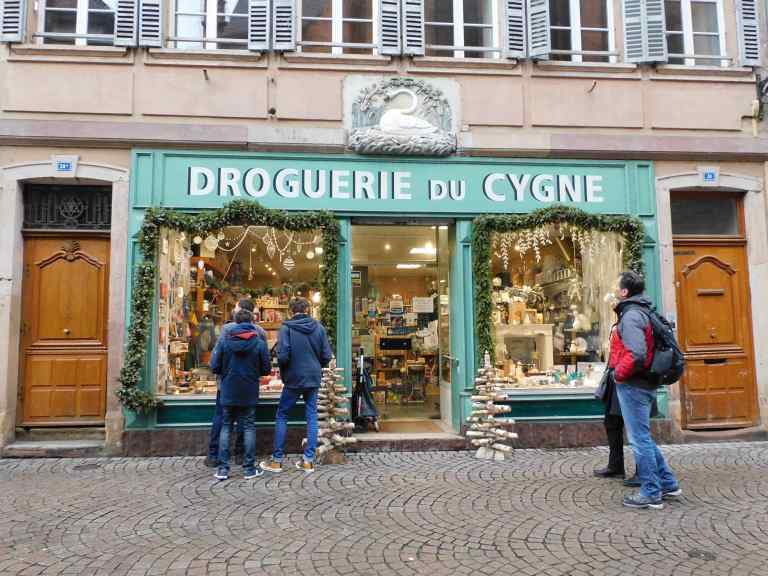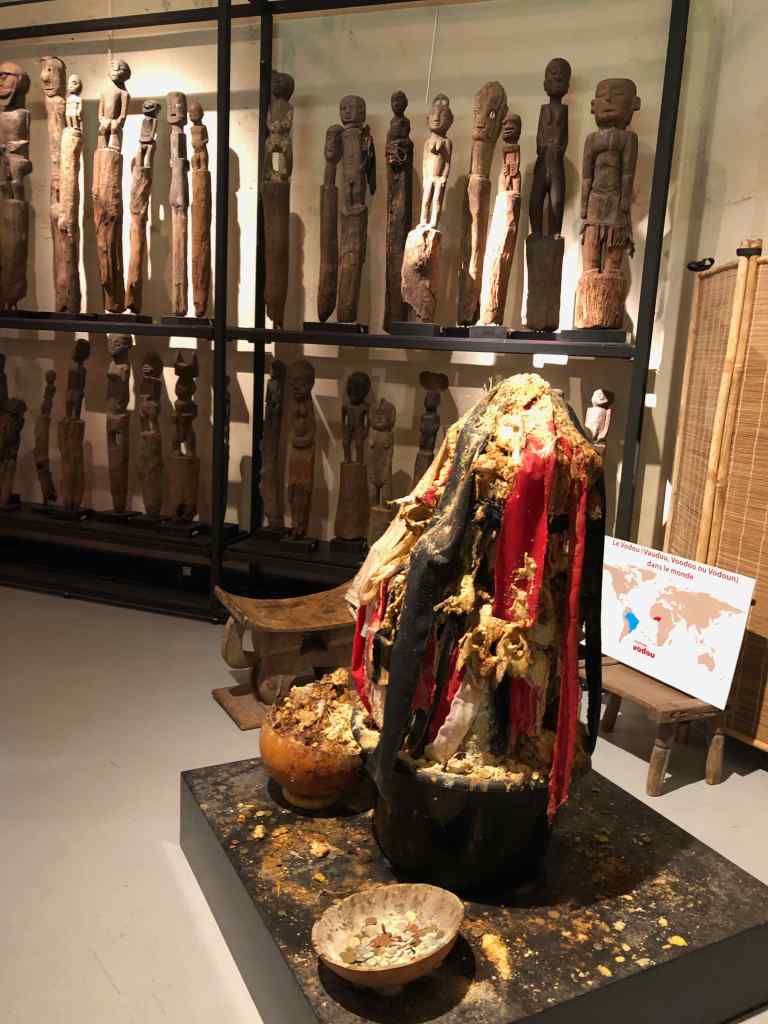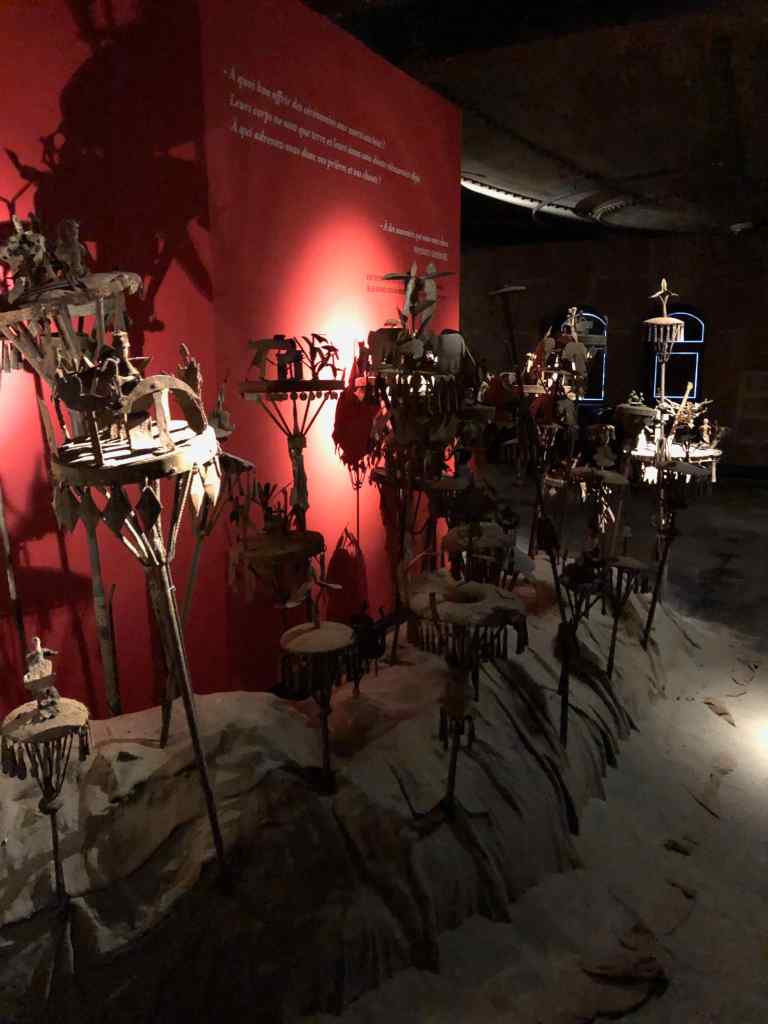Today was our second and final day in Strasbourg. Having enjoyed the Christmas Market and architecture in downtown yesterday, we focused today on Le Petite France, the city’s medieval district, which has similarly beautiful architecture.

On our way from the hotel to Petite France, we actually made a small pitstop – to the hospital! It turns out that underneath the modern hospital is a series of tunnels, which were used to produce / house the city’s winery back in the day. You actually have to enter the hospital grounds and find a relatively nondescript door on the side of one of the buildings, and follow the signs underground from there.

Once underground, you can enter both the old cellar as well as the modern wine fermentation cellar and the store.
Perhaps the most interesting component of the cellar is a barrel of wine dating back to 1472, which initially held 3,000 liters of wine. Apparently, it’s been used sparingly in the centuries since, and is somehow still drinkable and pulled out for especially special occasions for tastings.

After our visit, we stopped again on our way to Petite France to visit the History Museum, which houses a great collection of artifacts from Roman times to the ~1960s.




Then, we continued into le Petite France, seeing some of the beautiful architecture along the way and stopping for a quick treat.



In Petite France, the main appeal is the medieval architecture surrounding a series of canals – there are also glass-topped boats which circle on the rivers, and you can watch from above as the boat goes through a locking process to ensure it stays at water level, due to the big medieval dam in the middle of the river.




The area is also dressed up with Christmas decor, making it especially picturesque.



After wandering around for a while, we stopped to grab lunch at a Michelin-rated restaurant just outside of the tourist-drag within the neighborhood. It was initially empty when we arrived, but quickly filled up.

This restaurant was truly like traveling back in time to a Christmas meal with the French grandparents I never had. It’s run by a husband (chef) and wife (host / waitress), who singlehandedly take orders, explain the menu to tourists like us, and cook all of the food from scratch with the help of a younger man (we guessed their son, but we didn’t get confirmation). They also come out between each course to ensure the guests at each of the six tables are enjoying themselves, also performing tableside plating as needed.

As the resident tourists with no knowledge of French, we essentially asked our host to pick her favorite things on the menu. She patiently (very patiently, given our extremely limited knowledge of French!) explained each option she thought we should try, and also picked great wine pairings as well. While we waited for mains, she brought out a sausage with extremely sharp mustard. It was delicious – and, she had no problem reprimanding me for eating it inappropriately, using my utensils instead of my fingers!

We ended up with a great meal of French dishes I’d certainly never tried before – each of which was clearly handmade and cooked fresh minutes beforehand (to the point where we asked for the recipe for the rabbit dish and she actually brought out an uncooked version they had prepped so we could see how it was made!).
We tried a liver pate, accompanied with pickled garlic (this was a much more robustly flavored pate than I’ve ever had – extremely iron-filled flavor), a baked red pepper stuffed with crab meat (an oddly delicious pairing, in my opinion), and the pièce de résistance, a ‘meatloaf’ (my bastardized English explanation for this, it was much more complex in her explanation) which is essentially ground pork shoulder and Alsatian fois gras wrapped in rabbit meat), cooked down in a decadent braising sauce.


Of course, we were also admonished for digging into the pate without the bread – we learned our lesson! Needless to say, it was a delicious meal. By the end of it (and after enduring a lot of our questions about the food and its preparation), she’d warmed up to us – and even ran outside to say goodbye after we paid! It was a great experience and certainly one for the books!
After our meal, we needed to walk off some of the decadence and headed back through Petite France towards the edge of town towards our next destination: the Vodou Museum. On the way, the touristy throngs turn into starker, clearly more ‘lived in’ architecture, with French bakeries replaced with Syrian and Lebanese bakeries.


Past the bakeries and under a couple relatively-sketchy feeling underpasses taking us clearly outside of the tourist area, we arrived at our destination: an old railway water tower which now houses the museum. Inside, the Vodou Museum is three floors, packed with different artifacts (over 1,200!) collected by the owner starting in the mid-60s during his travels to Africa.

I’ll admit, we were initially extremely skeptical about what we’d find – obviously with something as mysticized in pop-culture as ‘voodoo’ it could have been hokey and ridiculous. However, it was actually an extremely insightful and well-prepared exhibit. Overall, I learned some interesting facts:
- Vodou is traditionally from west Africa, and most commonly found in Benin, Togo, Nigeria and Ghana
- The spelling of Vodou differs by region, and there are different connotations with each. The ‘voodoo’ spelling I’m familiar with is from Louisiana, in particular; apparently, practitioners also exist in Cuba as well
- Haitian ‘vaudou’ is relatively dissimilar to the version exhibited in the museum – they didn’t explicitly state it, but it sounded like there might be fundamental differences in the beliefs in these forms of the religion as well
- Vodou is extremely compatible with other ‘major’ religions, and often symbols of Christianity, Islam and Hinduism can be seen in artifacts
All of the items in the exhibit we saw were from Africa, giving me insight into a series of cultures I’ve not had much exposure to at all. The first floor was essentially an introduction to the religion and the different ‘fetishes’ and their purpose, including the use of medicinal plants, which the museum is beginning to collect in an external greenhouse.

The second floor deep dives into specific items in the collection, each of which has a unique story and meaning. Essentially, each item is a ‘fetish’ or a figurine crafted by a vodou priest. These items have to be specifically requested by someone (i.e., the priest can’t just create them for fun or to sell) and serve a specific purpose. The price (typically paid in alcohol / blood of a sacrificed animal) increases in volume depending on the magnitude of the request. In some cases, the fetishes are created for a community and kept by the priest until no longer needed; in all cases, fetishes are typically made of reused component parts, some of which might be hundreds of years old and reused many times.

Perhaps most interesting were the fetishes which told a specific story – for example, a fetish representing an Indian man who had moved to Africa and was believed to be a sorcerer due to his turban. After his death, his turban was kept and used in the statue as a bag, paying tribute to him. Other fetishes are women with swollen bellies and mirrors, perhaps representing a desire to improve fertility and repelling curses causing infertility.
A crucial piece of the fetish is having the right materials, and there were a couple interesting examples shown. One was a series of fetishes intended to protect those sold into the slave trade – including real shackles around the ankle of the fetish.

Other exhibits included an interesting explanation of how vodou works with other religions, such as in these ‘portable grave markers’ – these essentially visibly represent components of a person’s identity, so there are symbols from other ‘major’ religions mixed in with vodou symbols.

There was also a floor dedicated to costuming for various events, including ‘masks’ used in ritual ceremonies. Interestingly, masks are often part of the mystical nature of vodou; for the straw-based one below, there are many stories of how the mask has ‘revealed’ its wearer – often to be something improbable, like an alligator or a plate of chicken large enough to feed the whole village. It’s also rumored that if you touch the mask, you are cursed to die within a week.


Overall, a much more impressive collection and insightfully curated museum than we were expecting! On our way back to the hotel, we stopped for a brief coffee ‘gourmand’, which came with a decadent whipped cream, chocolate mousse, and a traditional Christmas cookie.

After resting at the hotel, we headed back into town for dinner. We needed a break from the extremely rich French and German food we’ve been enjoying, and opted instead to try Strasbourg’s Vietnamese food – it definitely didn’t disappoint!
On to Switzerland tomorrow!



